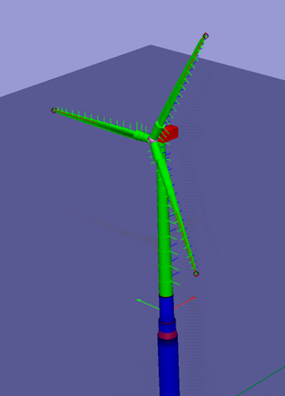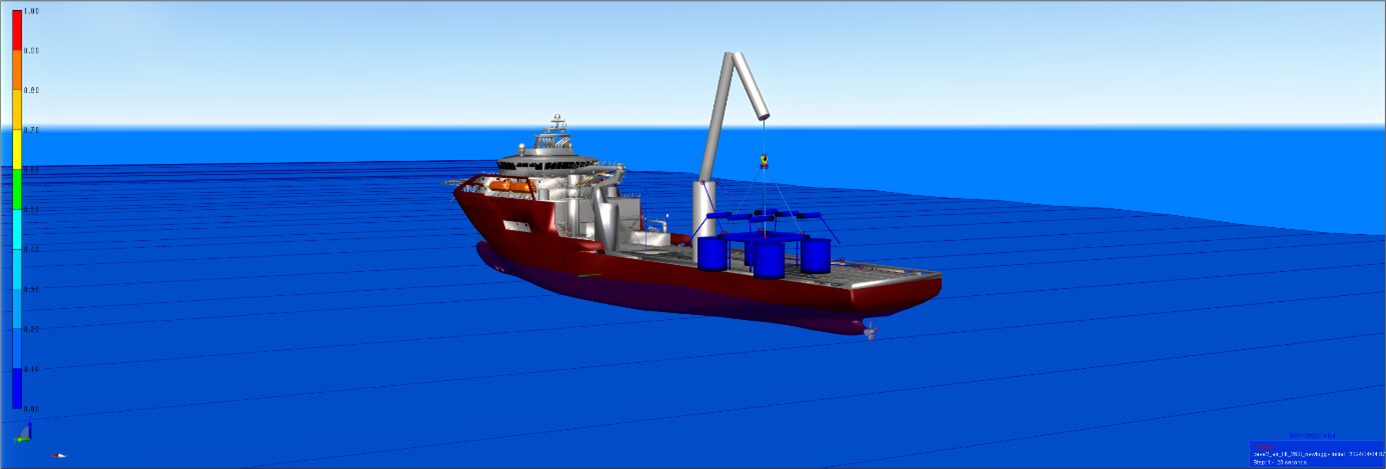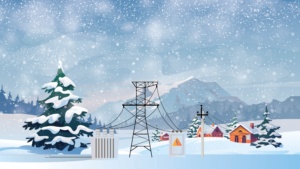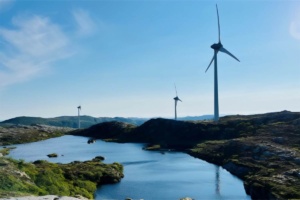SIMA is a simulation workbench developed at SINTEF Ocean that can model the physics of ocean structures subjected to environmental loading from wind, waves and current. SIMA offers flexible and generic modelling capabilities that can be applied to many scenarios across multiple ocean industries.
Here are some cases where SIMA can be used to provide valuable insights:
Station-keeping
Floating offshore structures are kept in position using a system of mooring lines, thrusters controlled by a dynamic positioning system (DP system), or a combination of both. Depending on the type of structure there might be limits to how much motion is permissible. For instance, an oil & gas platform must not drift so much that the production risers are damaged, and a floating wind turbine should be moored so that motions are withing what the power cable can handle.
SIMA is well suited for station keeping analysis and can be used to assess mooring system loads and floater motions according to ISO 19901-7. To model the floater in SIMA, results from potential theory solvers like are utilised. This includes both first and second order wave forces, where the latter may be calculated using quadratic transfer functions (QTFs). Wind and current loads are included by importing wind and current coefficients, typically calculated either using Computational Fluid Dynamics (CFD) or model tests.
Moored floaters both with and without thruster assistance can be modelled as well as floaters operating on dynamic positioning alone. Both fixed direction and rotatable (azimuth) thrusters can be modelled and controlled by the dynamic positioning system. SIMA provides an internal DP system based on a Kalman filter which is suitable for most the common types of analyses. It is also possible to connect an external model of a DP system, for example one provided by the vendor, for even more accurate simulations.
Offshore wind turbines
SIMA includes modelling capabilities that enables the user to build a complete and accurate physical representation of both fixed and floating offshore wind turbines. Important physics that are captured include hydrodynamics, aerodynamics, structural response and behaviour of the pitch-torque control system. The turbine control system is used to control blade pitch, generator torque and optionally the direction of the nacelle.

Risers, umbilicals and power cables
Risers, umbilicals and power cables are slender marine structures subject to large deformations under load. Analysis of such systems requires specialised simulation software which is able to handle these large deformations. The finite element solver in SIMA is designed specifically to be computationally efficient in handling large deformations of slender structures. This makes SIMA suitable for combined loading analyses of riser systems following for example the DNV ST F201 and ISO 13628-7 standards.
Umbilicals, power cables and flexible risers are all structures with complex cross section geometries. Detailed analysis of such cross sections is outside the scope of a global finite element model. The global behaviour of the structure as simulated by SIMA can, however, be used as input to detailed simulations in applications like UFLEX and BFLEX.
Lifting operations
Offshore crane and lifting operations involve a series of weather sensitive activities. To ensure safety and efficiency in the operations, numerical simulations are used both for feasibility studies of new concepts, as a tool during hazards identification, and to determine the limiting sea states for a particular operation. Typical examples of offshore lifting operations can be installation of subsea components, turbine blade installation as well as riser installation and maintenance.

SIMA offers a flexible approach to modelling the critical phases of lifting operations like analysing pendulum motions of a payload suspended in air. As the payload is lowered into the wave zone, modelling of slamming loads enable assessment of potential slack events in the lifting wire. SIMA has models for many components commonly used in lifting operations like constant tension tugger winches and heave compensation systems.
Aquaculture
As the aquaculture industry moves further offshore, demands for designs that can withstand more extreme weather conditions increase. Several new aquaculture concepts for offshore use are steel semi-submersible structures with flexible nets between pontoons. By combining floater models originally developed for the oil and gas industry with a flexible fish net model, SIMA is able to analyse new aquaculture concepts designed for offshore use.
Conventional inshore fish farms are designed quite differently compared to their offshore counterparts. These structures are characterised by their high structural flexibility which leads to large deformations under environmental loading. The nonlinear finite element solver in SIMA is capable of simulating such fish cages with large deformations in both regular and irregular waves.
A numerical model of a fish farm is not only a valuable tool for design and verification of the mooring system. It can also be combined with a numerical model of one or more service vessels in order to simulate interaction between the fish cage and service vessel during lifting operations. This can be used for hazards identification and when determining operational limits.
Want to know more?
Visit the SIMA website or contact Pål Levold for more details.











Comments
No comments yet. Be the first to comment!